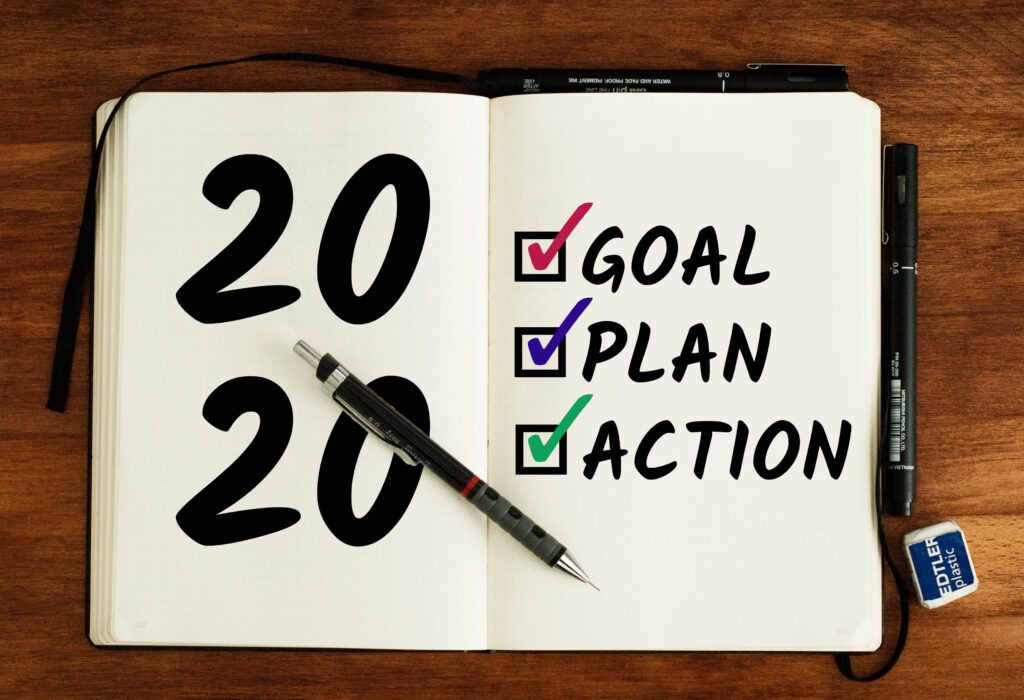“You gotta have a goal. Do you have a goal?” Do we need Kit DeLuca (from Pretty Woman) to tell us that we all need to have goals? As we charge into a new decade, it is that time of year where we all inevitably take stock of our lives and perhaps make some New Year’s resolutions.
I would offer that it’s better to make goals instead of resolutions. A resolution is defined as a firm decision to do or not to do something—but a goal is defined as an aim or desired result, the object of a person’s ambition or effort. Resolutions are almost always broken or not fulfilled; having a goal is the desired result that can direct your efforts throughout the year without the disappointment or letdown resulting from a broken resolution.
Achieving Your Goals – Here is a foolproof blueprint for attaining your goals:
• Set a clear GOAL: either make it specific OR break down the goal into steps with more detail and content. An achievable, realistic goal – or achievable steps towards a goal – motivates you toward success and helps guide your efforts.
• Write down your goal: studies show that if you do something as seemingly simple as write down your goals, you’re more likely to achieve them.
• Start the work: keeping your goal in mind as you begin working and creating and following an action plan will help you organize your time and your resources so you can make the most of your efforts.
• Keep doing the work: managing your time wisely is the best way to getting your work done, but eliminating bad habits and shoring up your self-discipline will help as well.
• Check in throughout the year: what is working for you as you move toward your goal? Is your team managing their time effectively? Is there a roadblock that you cannot move past? Periodically checking in to see your progress will keep you on the path to success.
Here at PBP, we set personal goals and goals as a company every January, and then check in quarterly to evaluate our progress on achieving these goals. When it comes to your clients and their events, setting goals are a great way to focus your staff and give everyone targets to work toward. Goals for a specific event can include:
• Fundraising: this is the goal that most events are measured by, and there are many ways to increase the funds coming in for an event, including increasing the number of donors, having phenomenal silent and live auction items, and engaging your attendees during a live appeal.
• Outreach: how about setting a goal to increase your amount of focused, targeted outreach? Perhaps by having all Board members reach out to their networks and targeting mailings to lapsed donors.
• Number of attendees/number of new attendees: increasing the number of attendees at an event is a goal that will be very visibly attained (or not). Set a goal to get more first-time attendees, people who are new to the organization and can bring enthusiasm and new financial resources to your event? You can do this by having discussions with Board members and key stakeholders to mine their personal and professional connections for engaged individuals.
• Number of sponsors: don’t forget about casting a wide net to increase the number of sponsors for your event, both financial and in-kind. Garnering more in-kind sponsors will enhance your attendees’ experience at the event while giving companies the chance to do good by supporting a great cause.
Goals can help shape your thinking and actions by providing direction and motivation, giving you clearer focus on that which is important, clarity in decision making, and a sense of purpose and ultimately, satisfaction when the goal is met.
Best of luck as you set – and achieve – your 2020 goals!

